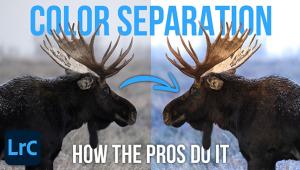Emerson will also use a Leica M9 for outdoor building shots and occasionally for lifestyle, when he needs a more editorial feel, mostly using the 35mm lens, but on occasion the 50mm and 90mm optics. free cell phone spy software cell phone spyware
Pro's Choice: John Emerson: The Doctor Is In: Photographing The Healthcare Industry
“I fell into shooting the healthcare industry quite by accident,” recalls Montclair, New Jersey-based photographer John Emerson (www.johnemersonphotography.com). He’d met an art director who hired him to photograph the staff at a research lab, for Rutgers University—which remains a client some 20 years later. That was the proverbial foot in the door. Aside from that, Emerson continues to pursue his other passion: environmental portraiture of celebrities, athletes, and politicians.
Client: Chilton Memorial Hospital, Pompton Plains, NJ

© John Emerson
Originally Emerson worked as an assistant for a commercial illustration photographer. But seeking to broaden his horizons and get out of the studio, Emerson moved on to work with editorial photographers who specialized in portraiture. “I think it takes a lot more creativity to come up with an interesting shot on the spot,” Emerson points out.
A Trend Toward Realism
That editorial approach paid off. In recent years, his clients began edging toward a more lifestyle look in the portraits they hired him to shoot. For assignments that feature a patient profile (a success story), for instance, the client prefers to show patients who are back on their feet and busy with life. “Since these shots are not staged, I keep the lighting to a minimum.” Often he may simply use reflectors or scrims with available light, where needed.
Client: University of Medicine and Dentistry of New Jersey

© John Emerson
Another reason Emerson prefers not to shoot in a studio, especially for patient profiles: “People find it harder to relax in a studio. On the other hand, working with them in their own environment puts them in their comfort zone.” Within five minutes, Emerson notes, the person feels at ease in front of the camera. That doesn’t mean that Emerson never uses a studio. He does, on occasion, and will rent when necessary.
Lighting For Healthcare
Some healthcare work takes the photographer directly into the Operating Room (OR). The problem here is, you can’t pop strobes in a surgeon’s face while he’s operating on a patient. “The only way to use strobe would be to stage a surgery, but then the shot loses its immediacy and impact. So I shy away from that.” Instead, Emerson turns to existing light. “The downside is that I can’t light it as much. The most I can do is maybe get an assistant in there with a silver reflector to help throw a little bounced light from the surgical light. I’ve occasionally set up a few ARRI hot lights to accent things in an OR, but that’s the extent of my lighting.” Emerson adds that hot lights blend in well with existing lights.
Client: New Jersey Monthly Magazine

© John Emerson
When it comes to portraits of doctors and researchers in a more casual environment, strobe lighting reigns supreme. That may be the case outdoors as well. “I can’t always shoot during the best time of day, from a lighting standpoint, so I often have to find a spot in the shade and light the subject. Or if I have to work with sunlight, I’ll first diffuse the light with an 8x8 Matthews silk (supported in a frame, on two hi-boy stands). The silks help balance the lighting on the subject with the background illumination. And since even the slightest wind can topple over a screen, it’s mandatory to sandbag the stands in place, and possibly have a couple of assistants to lend a hand.”
For his strobe lighting, Emerson turns to Profoto Acutes, including an Acute 6B battery-driven unit when power is not available. Mostly, though, to ensure he has power outdoors for the AC-driven units, he’ll bring his own Honda gas-powered generator.
Emerson may employ umbrellas and softboxes to shape the light. One of his favorite techniques involves centering a Profoto beauty dish (with grid attached) within an octabank. The bank, which is set one or two stops below the “key” light, softens the edges, as fill. And there’s only one catchlight. He’ll also use a Profoto ring flash at the camera, but in this instance, it becomes the fill light, with the subject flanked by two Chimera softboxes providing the main lighting. He also uses Visual Departures dual-sided (white/dull silver and black/silver) Flexfill collapsible reflectors. He often uses the black side to pull light from the face and add depth.
Client: Robert Wood Johnson University Hospital

© John Emerson
Choosing Cameras
Emerson started with a Hasselblad 500CM and a Nikon F3, but switched to digital nearly 10 years ago. Until recently, he’d worked with Canon EOS D-SLRs, but switched over to the Nikon D3X and in particular, for low-light shooting (such as in the OR), the D3S. His Nikon lenses include the 24-70mm f/2.8, 70-200mm f/2.8 VR, 50mm f/1.4, and 105mm Micro. And since switching to Nikon, he also added the new SB-910 speedlight. His current Hasselblad is the H3D (31MP), which he uses with a variety of lenses from 35mm to 150mm, including the 120mm macro. Emerson will also use a Leica M9 for outdoor building shots and occasionally for lifestyle, when he needs a more editorial feel, mostly using the 35mm lens, but on occasion the 50mm and 90mm optics.
When shooting research shots, Emerson points out that the client often asks him to shoot details. “I walk around the lab or the OR and look for things of interest to shoot.” With these kinds of shots, he doesn’t have the luxury of staging elaborate sets, so working on the fly he fabricates a simple solution, such as using a softbox as a shooting table. “One thing I do to make these shots more interesting is, I get in really tight with the macro lens and shoot at maximum aperture to throw things out of focus, which gives the picture an edgy feel.”
Client: Meridian Health

© John Emerson
Emerson routinely begins with the camera on a tripod, “and within minutes I’m shooting handheld so that I can explore different angles.” He has two carbon-fiber Gitzos, with a Gitzo ball head on the lightweight tripod and a Manfrotto ball head on the other, each head with quick release.
He prefers to shoot to memory card, especially when speed or other constraints come into play. To help him see the image better he uses a Hoodman magnifier. He’ll shoot tethered when the lighting gets complex or if the shot involves numerous people.
Client: Montefiore Hospital

© John Emerson
Interestingly, Emerson has to wear full surgical scrubs in the OR, “but I don’t have to scrub up,” he adds good-humoredly. The majority of his equipment has to be left outside. “Anything that I do bring in has to be covered in a sheet and I only take out what I need: you don’t leave things lying around in an OR.”
- Log in or register to post comments


Access to health care varies across countries, groups and individuals, largely influenced by social and economic conditions as well as the health policies in place. Countries and jurisdictions have different policies and plans in relation to the personal and population-based health care goals within their societies. Thank you.
Reinventing Aging

Though there are confidentiality in terms of the health care privacy however with regards to the services and the health care provider it is essential for patient and care provider to have trust each other and learn what are they. Good shots and it is ideal!!!
-----------------------------------------------

are a vivacious example to require comprehensive information concerning the drug rehab program and its operating methodology. These reviews adds additional value to the Narconon’s repute and builds people’s confidence on the organization and its dedication for the humanity serving. http://www.musclexus.org/
The medical aid used for the execution of Reviews drug programme that clearly indicates regarding its intentions and dedication for the effort that's place fairly for saving one’s life. making all this possible is never straightforward but the labor, enthusiasm and commitment by the organization makes it pretty uncomplicated and easy to be done..

















































